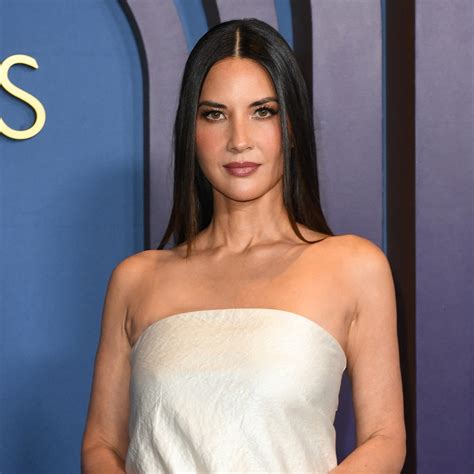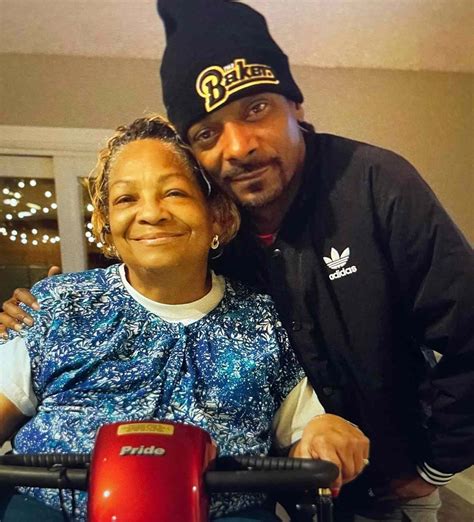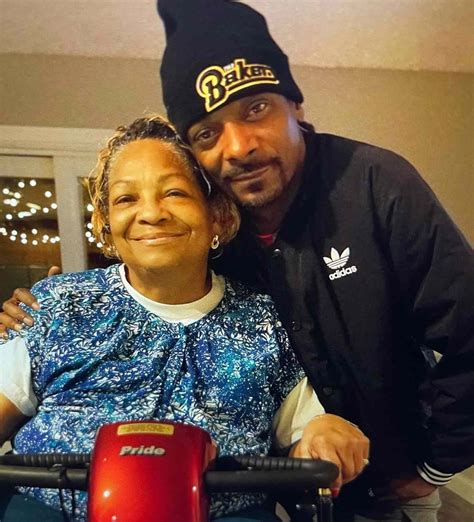
People magazine removed an online article about actress Olivia Munn after receiving threats, prompting concerns about the safety of journalists and the impact of online harassment on media coverage. The article, which focused on Munn’s personal life and recent health struggles, was taken down from People.com following what the publication described as credible threats.
People magazine has pulled an article featuring Olivia Munn from its website after receiving threats deemed credible enough to warrant the removal. The article, which reportedly delved into Munn’s personal life, including her experiences with motherhood and her recent battle with breast cancer, was taken down as a precautionary measure to ensure the safety of those involved. While People has not disclosed the specific nature of the threats, the decision highlights the growing concern over online harassment and its potential to silence media outlets and impact reporting.
The removal of the article has sparked a debate about the responsibility of media organizations to protect their staff and sources, as well as the broader implications of online threats on freedom of the press. It also raises questions about the extent to which celebrities and public figures are entitled to privacy, particularly when they have previously shared details about their personal lives.
“We removed the story because after publishing it, we received threats,” a spokesperson for People said in a statement. The publication did not elaborate on the nature of the threats or who made them, citing security concerns. The decision to remove the article has been met with mixed reactions, with some praising People for prioritizing safety and others criticizing the move as a capitulation to online intimidation.
The now-deleted article reportedly covered Munn’s journey as a new mother to her son, Malcolm, whom she shares with comedian John Mulaney. It also touched on her recent diagnosis with breast cancer and her decision to undergo a double mastectomy. Munn has been open about her health struggles on social media, using her platform to raise awareness about the importance of early detection and preventative care.
In an Instagram post earlier this year, Munn shared details about her diagnosis and treatment, writing, “I hope by sharing this I can help others find comfort, inspiration and support on their own journeys.” She also thanked her doctors, family, and friends for their support during a challenging time.
However, the People article apparently contained information that someone found objectionable enough to warrant making threats, leading to its removal. The incident underscores the challenges faced by media outlets in the digital age, where online harassment and threats are becoming increasingly common.
Many journalists and media organizations have reported experiencing a surge in online abuse in recent years, often targeting women and minorities. This abuse can range from hateful comments and personal attacks to doxing and death threats. The impact of online harassment can be significant, leading to emotional distress, self-censorship, and even physical harm.
Several organizations are working to combat online harassment and protect journalists and media workers. These include the Committee to Protect Journalists (CPJ), the International Women’s Media Foundation (IWMF), and PEN America. These organizations provide resources and support to journalists who are facing online abuse, as well as advocating for stronger protections for freedom of the press.
The incident involving People and Olivia Munn also highlights the complex relationship between celebrities and the media. Celebrities often rely on media coverage to promote their work and maintain their public image, but they also have a right to privacy. When celebrities share personal information with the media, they run the risk of having that information used in ways that they did not anticipate or approve of.
In this case, it is unclear what specific information in the People article led to the threats. However, the incident serves as a reminder that even seemingly innocuous stories can sometimes trigger strong reactions, particularly in the age of social media.
The decision by People to remove the article has also raised questions about the role of social media platforms in addressing online harassment. Social media companies have been criticized for failing to adequately police their platforms and for allowing abusive content to spread unchecked. While some platforms have taken steps to address this issue, many argue that more needs to be done to protect users from online harassment.
The incident involving People and Olivia Munn is a reminder of the challenges faced by media organizations and journalists in the digital age. Online harassment and threats are becoming increasingly common, and they can have a significant impact on the ability of the media to report on important issues. It is essential that media organizations, social media platforms, and law enforcement agencies work together to address this problem and protect freedom of the press. The situation underscores the delicate balance between freedom of speech, responsible journalism, and the right to privacy in an increasingly interconnected world. It remains to be seen what long-term impact this incident will have on People magazine’s editorial policies and on the broader media landscape.
The incident has triggered discussions within the media industry about best practices for handling threats and ensuring the safety of journalists and sources. Many organizations are reviewing their security protocols and providing additional training to staff on how to identify and respond to online harassment. There is also a growing recognition of the need for greater collaboration between media organizations, law enforcement agencies, and social media platforms to address this issue effectively.
The case also raises ethical considerations for journalists when reporting on sensitive topics, particularly those involving personal health information. While celebrities may choose to share details about their personal lives with the public, journalists have a responsibility to exercise caution and avoid sensationalizing or exploiting this information. The decision to include certain details in a story should be carefully weighed against the potential for harm or distress.
Moreover, the incident serves as a stark reminder of the power of online communities and the potential for online harassment to escalate into real-world threats. While social media can be a valuable tool for communication and information sharing, it can also be used to spread misinformation, incite violence, and target individuals with abuse. It is crucial for individuals to be aware of the risks of online harassment and to take steps to protect themselves and others from harm.
The removal of the Olivia Munn article by People magazine is a complex issue with far-reaching implications. It highlights the challenges faced by media organizations in the digital age, the importance of protecting journalists and sources from online harassment, and the need for greater accountability from social media platforms. As the media landscape continues to evolve, it is essential that these issues are addressed proactively to ensure that freedom of the press is protected and that journalists can continue to report on important issues without fear of reprisal. The incident also underscores the importance of media literacy and critical thinking skills in navigating the increasingly complex information environment. It is crucial for individuals to be able to distinguish between credible sources of information and misinformation, and to be aware of the potential for online harassment and manipulation.
In conclusion, the situation involving People magazine and Olivia Munn is a multifaceted issue that raises important questions about media ethics, online safety, and freedom of the press. It is a reminder of the challenges and responsibilities that come with reporting in the digital age, and it underscores the need for ongoing dialogue and collaboration to address these issues effectively. The case serves as a cautionary tale about the potential consequences of online harassment and the importance of protecting journalists and sources from harm. The incident’s impact will likely be felt throughout the media industry, prompting further discussions and changes in policy and practice. The ability to report freely and safely is essential for a well-informed public and a healthy democracy, and it is imperative that steps are taken to safeguard these principles in the face of evolving threats.
Frequently Asked Questions (FAQ)
1. Why did People magazine remove the article about Olivia Munn from its website?
People magazine removed the article because after it was published, the publication received threats deemed credible. A spokesperson for People stated that the removal was a direct result of these threats, but the specific nature of the threats and the identity of the threat-makers were not disclosed due to security concerns. The magazine prioritized the safety of those involved over the publication of the article.
2. What was the content of the now-deleted People magazine article about Olivia Munn?
The article reportedly covered Olivia Munn’s journey as a new mother to her son, Malcolm, whom she shares with comedian John Mulaney. It also touched on her recent diagnosis with breast cancer and her decision to undergo a double mastectomy. The article likely included personal details and insights into her experiences, as Munn has been open about her health struggles on social media. However, the exact details that triggered the threats remain undisclosed.
3. What implications does this incident have for journalists and media organizations?
This incident underscores the growing concern over online harassment and its potential to silence media outlets and impact reporting. It highlights the challenges faced by media organizations in the digital age, where online harassment and threats are becoming increasingly common. The incident raises questions about the responsibility of media organizations to protect their staff and sources, as well as the broader implications of online threats on freedom of the press. It also emphasizes the need for media organizations to review their security protocols, provide training to staff on how to identify and respond to online harassment, and collaborate with law enforcement agencies and social media platforms to address this issue effectively.
4. How are social media platforms addressing online harassment and threats against journalists and public figures?
Social media platforms have faced criticism for failing to adequately police their platforms and for allowing abusive content to spread unchecked. While some platforms have taken steps to address this issue, many argue that more needs to be done to protect users from online harassment. Some platforms have implemented measures such as stricter content moderation policies, improved reporting mechanisms, and the use of artificial intelligence to detect and remove abusive content. However, the effectiveness of these measures remains a subject of debate, and many argue that social media companies need to take more responsibility for the content that is shared on their platforms.
5. What resources are available for journalists and media workers who are facing online harassment and threats?
Several organizations provide resources and support to journalists who are facing online abuse, including the Committee to Protect Journalists (CPJ), the International Women’s Media Foundation (IWMF), and PEN America. These organizations offer resources such as legal assistance, psychological counseling, digital security training, and advocacy for stronger protections for freedom of the press. They also work to raise awareness about the issue of online harassment and to promote best practices for media organizations and social media platforms. Additionally, many media organizations have internal policies and procedures in place to address online harassment and to support their staff who are facing abuse. These policies may include providing security assessments, offering counseling services, and working with law enforcement agencies to investigate threats.
Rewritten Article Expanded Analysis:
The decision by People magazine to remove the Olivia Munn article goes beyond a simple act of succumbing to threats. It represents a pivotal moment that forces a deeper examination of the media landscape and the delicate balance between public interest, personal safety, and freedom of expression. The incident exposes vulnerabilities within the media ecosystem and highlights the increasingly complex challenges faced by publishers in the digital age.
The Context of Online Harassment:
The digital age has brought unprecedented opportunities for communication and information dissemination, but it has also created a breeding ground for online harassment. The anonymity afforded by the internet, coupled with the viral nature of social media, has enabled individuals and groups to engage in abusive behavior with relative impunity. This harassment can range from hateful comments and personal attacks to doxing (revealing personal information) and credible death threats.
For journalists, especially women and minority journalists, online harassment has become an occupational hazard. They are often targeted for their reporting on controversial issues or for simply expressing their opinions. The impact of this harassment can be devastating, leading to emotional distress, self-censorship, and even physical harm. Many journalists have reported experiencing anxiety, depression, and post-traumatic stress disorder as a result of online abuse.
The Responsibility of Media Organizations:
The incident involving People magazine raises critical questions about the responsibility of media organizations to protect their staff and sources. While freedom of the press is a fundamental principle, it is not absolute. Media organizations have a duty to ensure the safety and well-being of their employees and to avoid publishing information that could put individuals at risk.
However, the decision of when and how to respond to threats is not always clear-cut. Media organizations must weigh the potential risks of publishing certain information against the public interest in having that information available. They must also consider the potential for self-censorship if they routinely remove articles or retract statements in response to threats.
In the case of the Olivia Munn article, People magazine apparently determined that the threats were credible enough to warrant the removal of the article. This decision suggests that the magazine believed that the potential risks to Munn and others outweighed the public interest in having the information in the article available.
The Role of Social Media Platforms:
Social media platforms have become a primary venue for online harassment, and they have faced increasing pressure to address this issue. While some platforms have taken steps to combat online abuse, many critics argue that their efforts have been inadequate.
One of the main challenges is the sheer volume of content that is shared on social media platforms every day. It is simply impossible for human moderators to review every post and comment, and automated systems are not always effective at identifying abusive content.
Another challenge is the tension between freedom of expression and the need to protect users from harassment. Social media platforms are often reluctant to remove content that is considered offensive or controversial, even if it is harmful, for fear of being accused of censorship.
However, many argue that social media platforms have a moral and ethical responsibility to protect their users from online abuse. They have created platforms that facilitate communication and information sharing, and they should also take steps to ensure that those platforms are not used to harass, intimidate, or threaten individuals.
Ethical Considerations for Journalists:
The incident involving People magazine also raises ethical considerations for journalists when reporting on sensitive topics, particularly those involving personal health information. While celebrities may choose to share details about their personal lives with the public, journalists have a responsibility to exercise caution and avoid sensationalizing or exploiting this information.
The decision to include certain details in a story should be carefully weighed against the potential for harm or distress. Journalists should also be mindful of the power dynamics involved in reporting on celebrities and avoid using their platform to bully or harass individuals.
In the case of the Olivia Munn article, it is unclear what specific information led to the threats. However, the incident serves as a reminder that even seemingly innocuous stories can sometimes trigger strong reactions, particularly in the age of social media.
The Importance of Media Literacy:
The incident involving People magazine underscores the importance of media literacy and critical thinking skills in navigating the increasingly complex information environment. It is crucial for individuals to be able to distinguish between credible sources of information and misinformation, and to be aware of the potential for online harassment and manipulation.
Media literacy involves the ability to access, analyze, evaluate, and create media in a variety of forms. It includes the ability to understand the different types of media, the techniques that are used to persuade audiences, and the potential biases that may be present.
Critical thinking skills are essential for evaluating information and making informed decisions. They involve the ability to question assumptions, identify biases, and consider different perspectives.
By developing media literacy and critical thinking skills, individuals can become more informed consumers of information and more resistant to online manipulation and harassment.
Moving Forward:
The incident involving People magazine and Olivia Munn is a reminder of the challenges and responsibilities that come with reporting in the digital age. It is essential that media organizations, social media platforms, and law enforcement agencies work together to address the problem of online harassment and protect freedom of the press.
Media organizations should review their security protocols, provide training to staff on how to identify and respond to online harassment, and collaborate with law enforcement agencies to investigate threats.
Social media platforms should take more responsibility for the content that is shared on their platforms and implement measures to protect users from online abuse.
Law enforcement agencies should take online threats seriously and investigate them thoroughly.
Individuals should develop media literacy and critical thinking skills to become more informed consumers of information and more resistant to online manipulation and harassment.
By working together, we can create a safer and more informed media environment for journalists and the public alike.
The broader implications extend to the entertainment industry and the pressures faced by celebrities who choose to share personal details. It raises questions about the line between public interest and privacy, and the responsibility of media outlets to protect individuals from harm.
The incident also serves as a stark reminder of the power of online communities and the potential for online harassment to escalate into real-world threats. While social media can be a valuable tool for communication and information sharing, it can also be used to spread misinformation, incite violence, and target individuals with abuse. It is crucial for individuals to be aware of the risks of online harassment and to take steps to protect themselves and others from harm. The dynamics of cancel culture also play a role, where public figures can face swift and severe backlash for perceived missteps, further intensifying the potential for online threats. The incident with Olivia Munn highlights the challenges in navigating this complex landscape and the need for a more nuanced approach to online interactions. The media industry is now grappling with how to balance freedom of expression with the need to protect individuals from harm, a debate that will likely continue to evolve as technology advances and online behavior changes.









